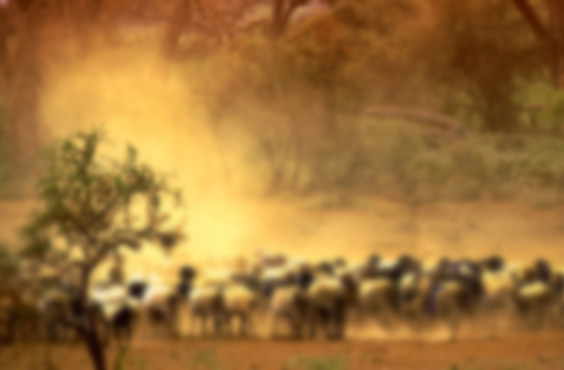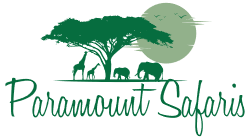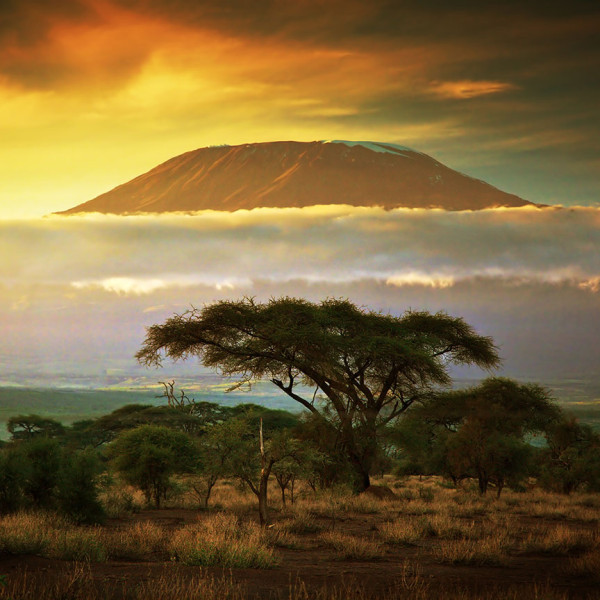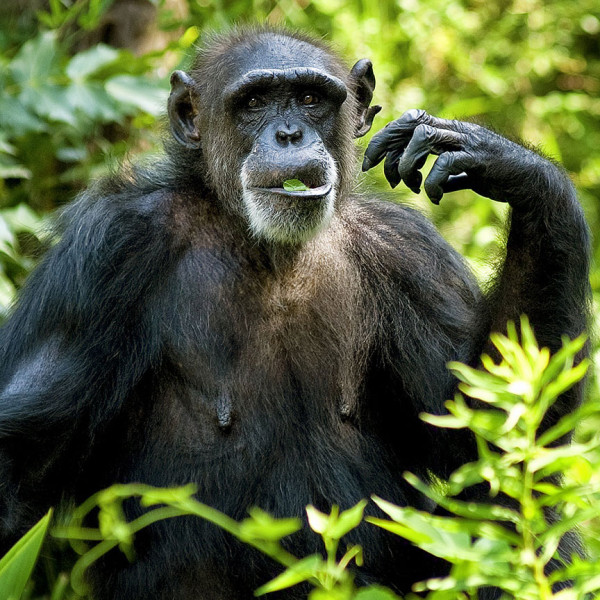
If you are looking for an amazing mountain adventure we recommend climbing Mt Kilimanjaro. It is the world’s highest free-standing, snow-covered equatorial mountain at 19, 340 feet. This place of myth and folklore watches over Tanzania like a proud father. Climbing Mt Kilimanjaro is a test of one’s abilities and has become a ‘must-do’ for traveler’s to Tanzania. The experience can truly be life changing.
Although not that technical, climbing Mt Kilimanjaro is not for the faint of heart. As the climb weaves through tropical forests around 6,000 feet, this area is usually damp or drenched with rainfall. At 10,500 feet a wide expanse of moorland extends beyond the cloud line, so here the skies are generally clear, making the sunshine intense during the days and the nights cool and clear. The climbing incline remains gentle, but thinning oxygen provides less fuel to energize the muscles and can slow the pace of walking. Climbing higher into the Alpine Desert beyond 13,000 feet is where sparse vegetation intensifies as the landscape develops into a more alpine desert. Few plant species survive beyond 16,000 feet where the landscape is mostly rock and ice.
Our expert guides do their best to ensure you reach the top when climbing Mt Kilimanjaro by providing comfort, good food and encouragement along the way. Making the summit is the goal of course, but the real reward is in taking the journey in the first place.
Arusha National Park is the starting point for Paramount Safaris Northern Circuit Safaris. It sits snugly in a wide expanse of fertile volcanic land in the foothills of Mt Kilimanjaro’s little brother, Mt Meru which is much more of a technical climb than Kilimanjaro, and a great challenge for more experienced climbers.
Arusha National Park is a multifaceted jewel, often overlooked by safari tours, despite offering the opportunity to explore a diversity of habitats within a few hours. Arusha is at the heart of Tanzania's safari industry – virtually everyone visiting Tanzania’s Northern parks will travel through this town. However, Arusha is definitely more than just a safari town; it has superb views of Kilimanjaro and with a number of coffee plantations at the edge of town, it is a great place to stay for a day or two before heading out on safari.
Arusha National Park is also a great distraction for a full or half day game drive. It is very quiet and has a wide variety of animals and superb bird life. The entrance gate leads into a shadowy forest inhabited by inquisitive blue monkeys – the only place on the northern safari circuit where the acrobatic black-and-white Colobus monkey can be seen. Also a rare sighting is the leopard who seemingly hides in plain sight.
Prices are per person and range from $1,520 to $5,250 depending on duration and lodging. For more details about itineraries and prices go to our Tour Packages page.
Gombe National Park is the smallest of Tanzania’s national parks, a fragile strip of chimpanzee habitat straddling the steep slopes and river valleys that hem in the sandy northern shore of Lake Tanganyika. This place was made famous by the pioneering work of Jane Goodall in 1960 who founded a behavioral research program that now stands as the longest-running study of its kind in the world.
The most visible of Gombe’s other mammals are also primates. A troop of beachcomber olive baboons are exceptionally friendly, while the red colobus monkeys stick to the forest canopy. The park’s 200-odd bird species range from the iconic fish eagle to the jewel-like Peter’s twinspots that hop tamely around the visitors’ center.
There's plenty to do: Chimpanzee trekking; hiking, swimming and snorkeling, a visit to the site of Henry Stanley's famous “Dr Livingstone I presume” near Kigoma. And watching the renowned dhow builders at work. After dusk, a dazzling night sky is complemented by the lanterns of hundreds of small wooden boats, bobbing on the lake like a sprawling city. Walking with the chimps in the rainforest during the day and swimming in lake Tangayika in late afternoon makes for an amazing day in Gombe.
Prices are per person and range from $1,520 to $5,250 depending on duration and lodging. For more details about itineraries and prices go to our Tour Packages page.
Not just a chimpanzee trekking destination, Mahale National Park has an absurdly good beach with gin clear waters. And the park itself would stake its claim as one of the most interesting destinations in Africa. Mahale is located in Western Tanzania to the South of Kigoma town, it borders Lake Tanganyika – the World’s longest, second deepest and least polluted freshwater lake that harbors an estimated 1000 unique fish species.
Like its northerly neighbor Gombe, this park is home to some of the Africa’s last remaining wild chimpanzees, a population of roughly 900. Tracking the chimps of Mahale is a magical experience that must be seen to appreciated. Mahale’s chimps have been studied and habituated for more than 40 years and are well accustomed to people. Nevertheless, they are wild animals so need their space, so care and respect are the order of the day.
There are many things to do while at Mahale. There are unique animals to see like the Angola Colobus monkey (pictured), and a wide range of forest birds. Lake Tanganyika is spectacular and includes activities like snorkeling, water sports activities and just relaxing and enjoying the beach. Local sports fishermen can be seen until the setting sun ends their day. And a hike to the Park’s highest point “Nkungwe” (8,069 feet) holds mysteries untold. Mahale is one of the most unique safari destinations in Tanzania. Enjoy!
Prices are per person and range from $1,520 to $5,250 depending on duration and lodging. For more details about itineraries and prices go to our Tour Packages page.





